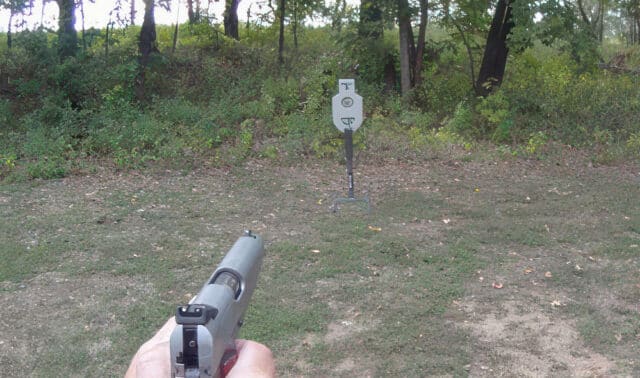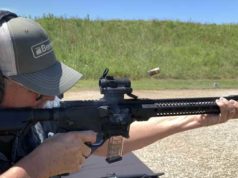This article was first published on DRTV Aug 21, 2012.
While this blog is authored by DOD Officer Dan Brady, it is a collaboration of thought between Dan and Narcotics cop Will Ruprecht. Both men have extensive military and LE training/experience and their thoughts are worth consideration. The drills listed are a mixture of HandgunCombatives, CSAT (Paul Howe) and Gunsite drills and are worth consideration.
Dave Spaulding
When we practice and train with live fire on the square range with our duty rig or daily carry kit we need to have a plan in place for what we want to accomplish with our allotted time and ammunition. We also need to understand what specific drills and standards are designed to teach or test. In general a good set of combative standards will provide:
1) A logical, progressive, stair stepped program that covers required skills.
2) A measurable standard to reach or maintain.
3) An applicable test of skill at weapons manipulations.
There are hundreds of firearms standards published and searchable online. What should you practice? Well in keeping with our philosophies of both simplicity and realism. I offer the following as a bench mark. It is a compilation of standards from a few different instructors.
This is not an all inclusive training program. It is a set of drills designed to test reasonable combat speed and accuracy on a square range, with a minimal round count. Each of the individual drills will require the shooter to acquire a sight picture, manipulate the trigger, manage recoil, draw the firearm, change magazines, transition sight picture from target to target, move, change firing hands, address a malfunction or some combination thereof. Each of these skills is critical and being able to perform each under externally mandated time pressure is indicative of a very competent level of skill at arms with a pistol. After completing the work out, see where your times are slow or you may have fumbled or your shots went astray and practice that drill a few times to shore up your manipulations in that area.
This set of standards is designed for law enforcement duty rigs, military kits, and concealed carry. Start your range session with this work out. It can and will help you identify strengths and weaknesses in your gun handling. Everything is fired from 7 yards. 3 targets should be spaced 1-2 yards apart. Any target type will do, IPSC, IDPA, CSAT, DST-5, or similar target but only hits in the “A” Box, -0 ring, or PNZ count as hits.
1) Ready. 1 shot on 1 target/ 0.8 Sec
2) On target. 2 shots on 1 target/ 0.5
3) On target. 1 shot on 2 targets/ 1.0 Sec
4) On target. 1 shot, reload, 1 shot on 1 target/ 3.0 Sec
5) Draw. 1 shot on 1 target/ 1.5 Sec
6) Draw. 1 shot on each of 3 targets/ 3.0 Sec
7) Draw. 2 shots on 1 target/ 2.0 Sec
8) Draw. Sidestep. 2 shots on 1 target/ 2.0 Sec
9) Draw. 5 shots to the chest, 1 shot to the head on 1 target / 4 Sec
10) Ready. 2 shots strong hand, 2 shots support hand on 1 target/ 4 Sec
11) On Target. 1 shot, Tap, Rack, 1 Shot on 1 target/3 Sec
12) Draw. 2 shots, Reload, 2 shots on 1 target/ 5 Sec
13) Face 180 away from the target line, Draw. 2 Shots on each of 3 targets, Reload, 2 shots on each of 3 targets/ 8 Sec
Total: 43 Rounds
As Always, train hard, train often and Check 360.
Dan Brady



Thank you for an interesting series of drills. I want to practice these and mostly shoot by myself. It seems I will need a shot timer to see if I am shooting within the spectrum for each drill. I have not used a timer before. Can these be used by one person, the shooter?
Shot timers are extremely easy to learn. Most models have a random start function, select this function and hit the start button. This will give you usually 2 to 5 seconds before the buzzer sounds and begins timing your shooting evolution.
Most good shot timers run between $90 and $120 depending on features.